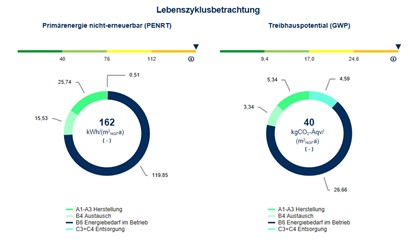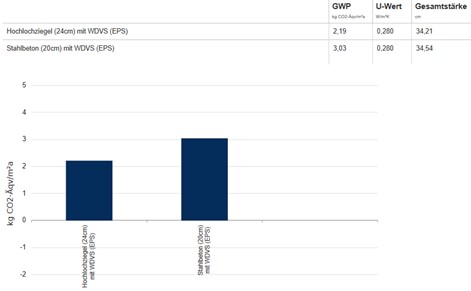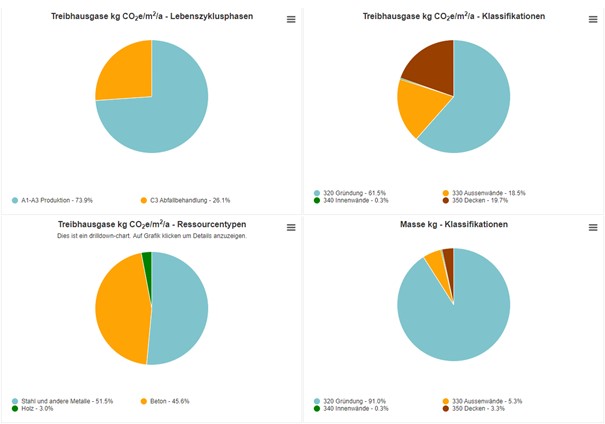
Fig. 1: Life Cycle Assessment © One Click LCA
Use in CAALA and One Click LCA
Sustainability has become an indispensable part of today’s world. This topic especially affects the construction industry, which contributes for around a third of global greenhouse gas emissions.
Therefore, it is very important to develop sustainable solution concepts already during the design phase, while considering the manufacture, use and disposal.
To help with the planning process, there are LCA (Life Cycle Assessment) tools such as CAALA (Computer Aided Architectural Life Cycle Assessment) and One Click LCA. Both tools make it possible to use 3d models from e.g. Revit or Rhino 3d.
CAALA: Here the construction is modelled with the help of surfaces. A layer is assigned to each area. Now different construction methods can be assigned to these different layers and the desired U-value for the respective component can be defined. CAALA automatically determines the required insulation thickness and can thus calculate the existing volume of each building material.
Hereinaftert, a life cycle assessment can be drawn up, which includes parameters such as the non-renewable primary energy consumption or the global warming potential are included. In addition to the ecological balance, the costs can also be shown. This enables the selection of the most economical solution which is possible. Both the non-renewable primary consumption and the global warming potential as well as the costs are shown differentiated according to the life cycle phases. (production, use, disposal).

Fig. 2: Life cycle assessment using the example of a single-family house

Fig. 3: Life cycle costs differentiated according to the life cycle phases
Since there is often no detailed 3d model available at the beginning of the planning, CAALA also offers the option of comparing different construction methods based on 1m ² in order to qualitatively determine the more sustainable construction method in terms of quality.

Fig. 4: Greenhouse gas emissions from a reinforced concrete wall with ETICS (right) icompared to a perforated brick wall with ETICS (left)
OneClick: With this tool, the volume can be taken directly from the 3d model. Which has the advantage that complex geometries or hollow cross-sections can also be considered in the calculation.
One Click LCA also shows a life cycle assessment that includes, for example, CO2 emissions. This has the advantage that the life cycle assessment is not only differentiated over the life cycle phases, but also that a distinction is made between the various building materials. The advantage of this LCA is not only the subdivision of the environmental impact during each phase, but also the difference among various building materials is shown.
One can immediately see where the savings potential is particularly high.

Fig. 5: Comparison: Life cycle assessment in One Click LCA
